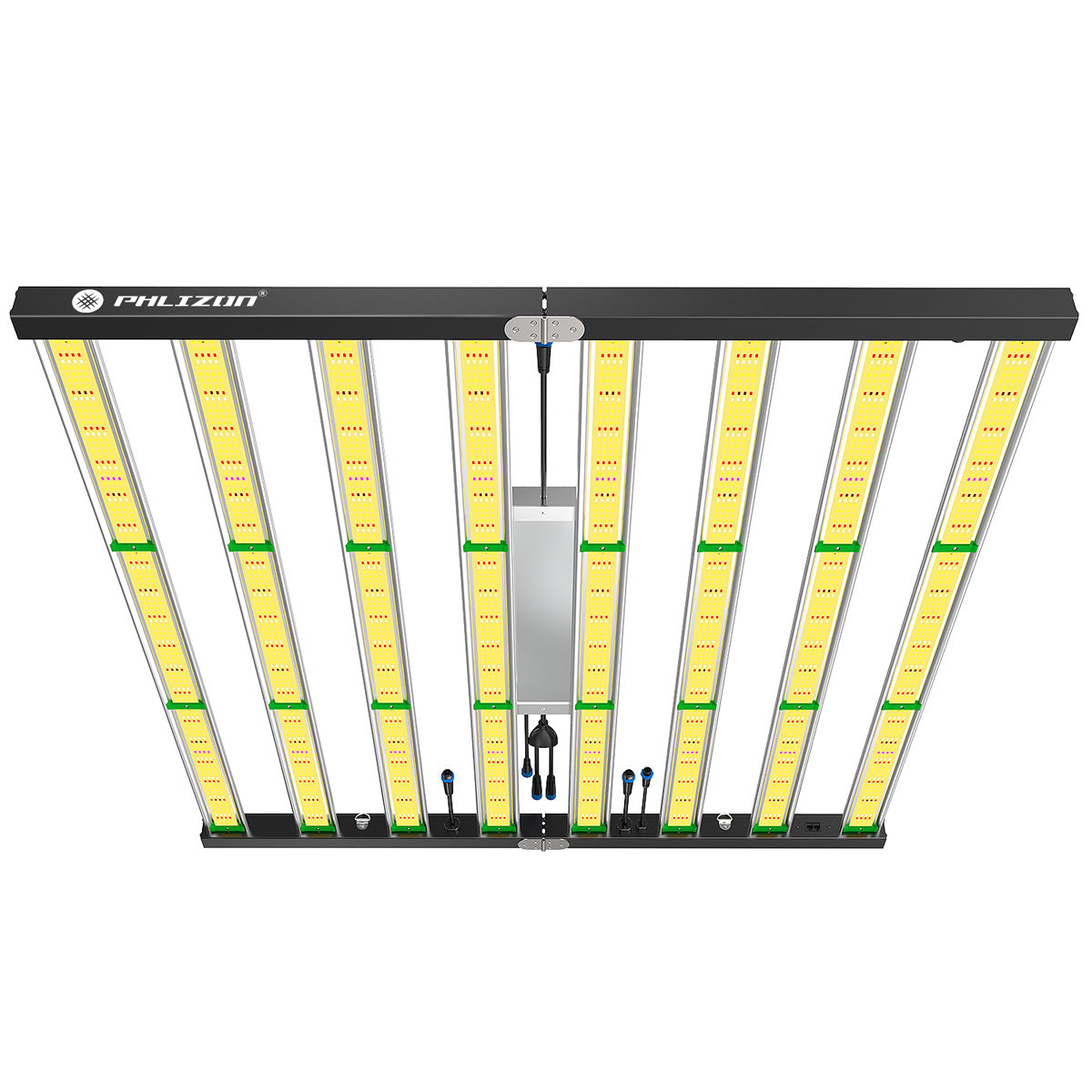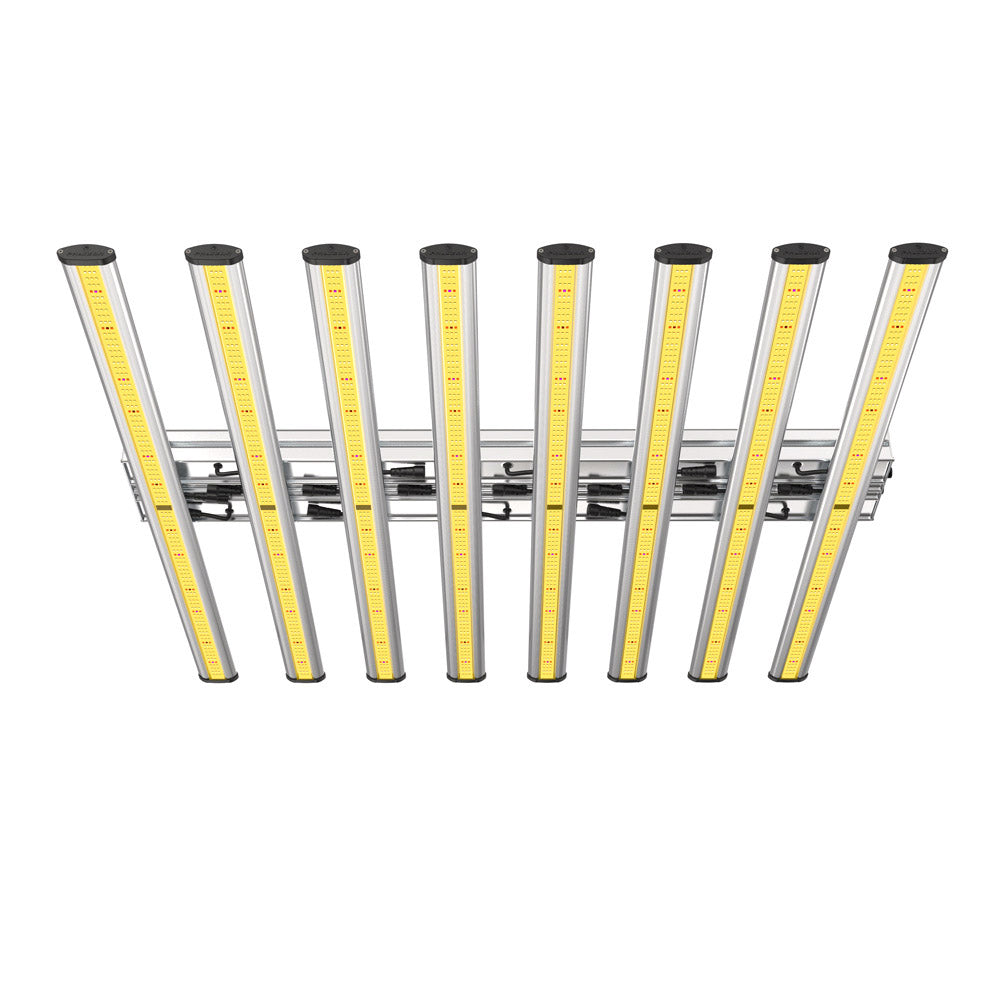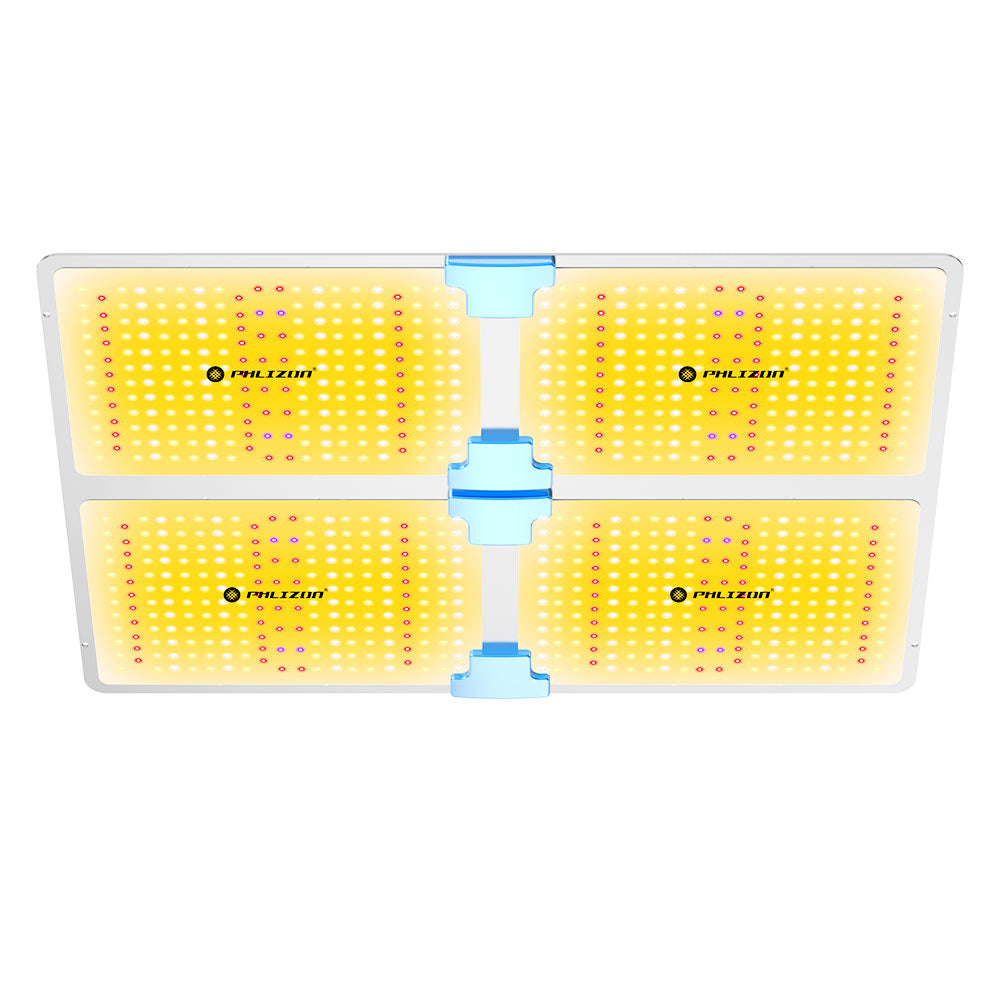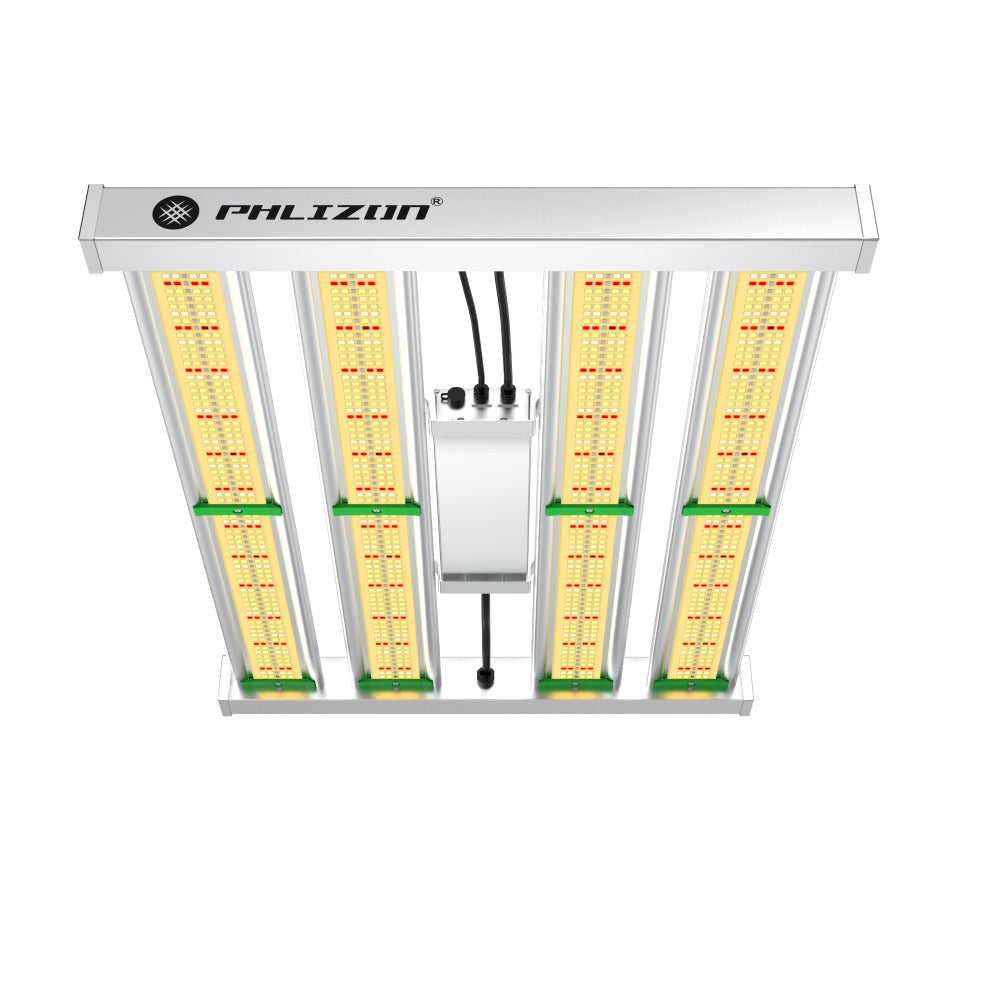Menu
How Far should LED Grow Light be From Plants at Different Growing Stages?

Today, more and more growers are opting out of traditional HID and T5 fluorescent lights, and installing LED lighting instead. Compared to HID light sources, leds emit less heat, which means that LED planting lights are not as close to the tree canopy as traditional planting lights. It is also important to learn about how the light distance affects the plant growth in different stages.
Here we would talk about the different lighting needs of various plants in their different growing stages, including cannabis, and how to determine the appropriate distance for LED lighting from the plant canopy to nurture plant growth, and the importance of PPFD(PAR) and other popular growth light terms.
How to Measure Light for Plant Growth
Understanding Full Spectrum LED Grow Light Distance Chart for Optimal Plant Growth
PAR(photosynthetically active radiation) describes the part of the visible spectrum that plants "see" and use for photosynthesis (400nm-700nm). PPFD(Photon flux density for Photosynthesis) measures the amount of light (PAR) received by plants over time. PPFD represents the density of light received by a plant over time, expressed in μmol/m2s.One way to visualize PPFD is to imagine the sun "pouring" light onto the leaves of plants. When sunlight hits plants, their leaves are gathering energy. PPFD is a measure of the amount of light (photons) that the sun "pours" onto plants over time. PPFD is an important indicator because it helps growers accurately measure the light intensity of photosynthesis at the canopy level. This is also important because lights too close to the canopy can cause burning, discoloration, growth retardation or discoloration.
|
Lighting Distance(meter/inch) |
Intensity |
PPFD / PAR |
Coverage (m² / ft2)* |
|
2m / 79 inches |
955lx |
670 |
7.6m2 / 81.8ft2 |
|
1.5m / 59 inches |
1692lx |
1170 |
5.0 m2 / 53.8ft2 |
|
1m / 39 inches |
3663lx |
1670 |
3.0 m2 / 32.3ft2 |
|
0.5m / 20 inches |
12,500lx |
2170 |
1.5 m2 / 16.1ft2 |
|
0.2m / 8 inches |
50,300lx |
2670 |
0.5 m2 / 5.4ft2 |
Table 1: Distance from LED plant light to plant canopy (600W LED Plant growth light)
* Coverage will vary depending on the growth lights used. The LED plant lights shown here do not use a lens to change the distribution of light.
Table 1 shows the performance of 600W LED growth lights at different distances from the plant canopy. It gives an overview of light intensity (Lux), provides a PPFD(umol/m 2s), and also shows the "light footprint" or coverage. Intensity, PPFD/PAR, and "light footprint" all vary with increasing or decreasing light distance from the plant canopy.
Table 1 also highlights how changing the distance of the same 600-watt LED light, the light intensity and "light footprint" or canopy coverage received by plants change. When the light source is located closer to the tree canopy, the intensity of the light increases. Usually, for vegetative stages of plant growth, the growth lamp should be located close to the plant canopy and higher (away from the canopy) during flowering.

Where should growth lights be placed at different ?
Plant growth can be roughly divided into three stages - seedling, vegetative and flowering.Seedlings
For seedlings, LED growth lights should usually be installed between 24 and 36 inches above the plant canopy -- however, this also depends on the power (wattage) of the light source. Place the LED planting lights farthest (~ 36 inches) from the seedlings -- this will keep heat and light levels low and help prevent drying out. Once the root system is established and starts budding, you can move the lamp closer (usually within the first 2-3 weeks).Vegetative
During the vegetative phase, LED planting lights should be 12-24 inches from the top of the tree canopy. At this stage, photosynthesis requires more light, so light sources should be located close to the plant.Flowering
As the plant enters flowering, plants need less bright light. The parietal lobe of the canopy should be 18 to 24 inches away from the light source to produce flowers. At this stage, the plant grows in height and produces fruit. Depending on the lighting and how you want your crops to grow, you don't have to change the height of the light during flowering, especially if you don't want tall and big plants.
When to Adjust the Light Distance
Over-closed Light Distance Cause "light burn seedlings"
When plants like cannabis are exposed to too much light at any stage, they often show symptoms of distress. Since LEDs do not emit much heat, the main issue that needs to be closely monitored is any signs of "light burning." Other side effects associated with grow lights being too close to the plant canopy may be discoloration or growth retardation/irregularity. Both must be identified quickly and the height of the grow lights adjusted accordingly.How to Identify "Light Burning"
There are signs of light burning in cannabis plants, including upturned leaves and what's called "bleaching." Bleaching is white or yellow spot on the leaves closest to the light. A light burn can also be recognized when the veins of a plant turn green and the rest of the leaves turn yellow.LED Grow Lights are More Common for Cannabis Growing
LED Grow Lights Provide Specific Spectrum
Applying LED growing lights into cannabis growing is becoming more common as growers move crop production indoors. LEDs also benefit growers because they can use specific spectrum to provide more targeted lighting conditions for different crops. Compared to traditional grow lights, LED grow lights are also of lower power consumption, lower positive heat, and increased yield in a shorter time.LED Grow Lights Help to Grow Desired Plants
The adjustable light distance of LED grow lights reflect the growers' desired height and uniformity of their plants. If we look at the crop demand for salad vegetables or lettuce compared to marijuana, we see that salad vegetables and lettuce are better suited for short, wider growth.
Read more: led vs hps
Featured blog
- Choosing a selection results in a full page refresh.



















